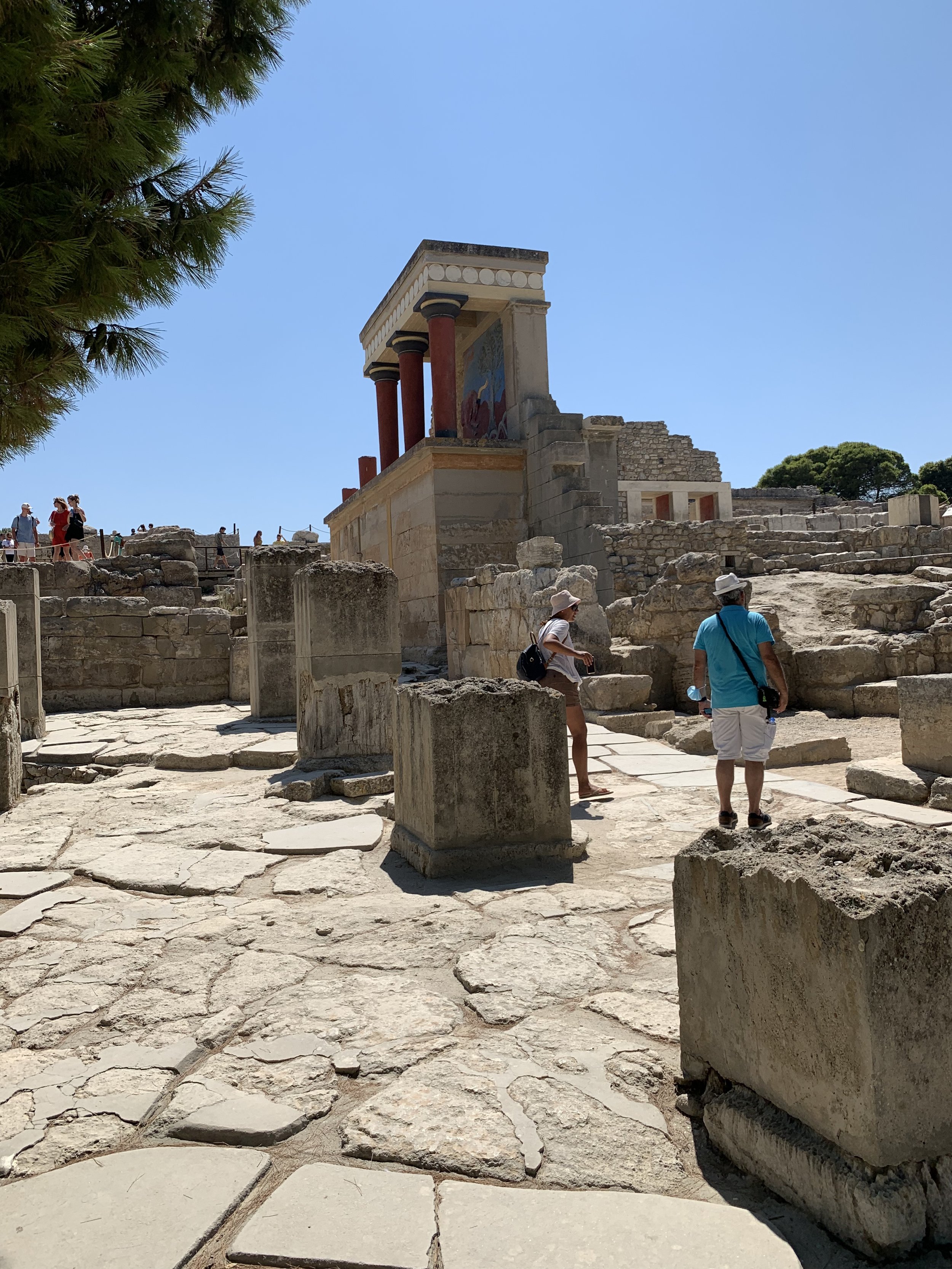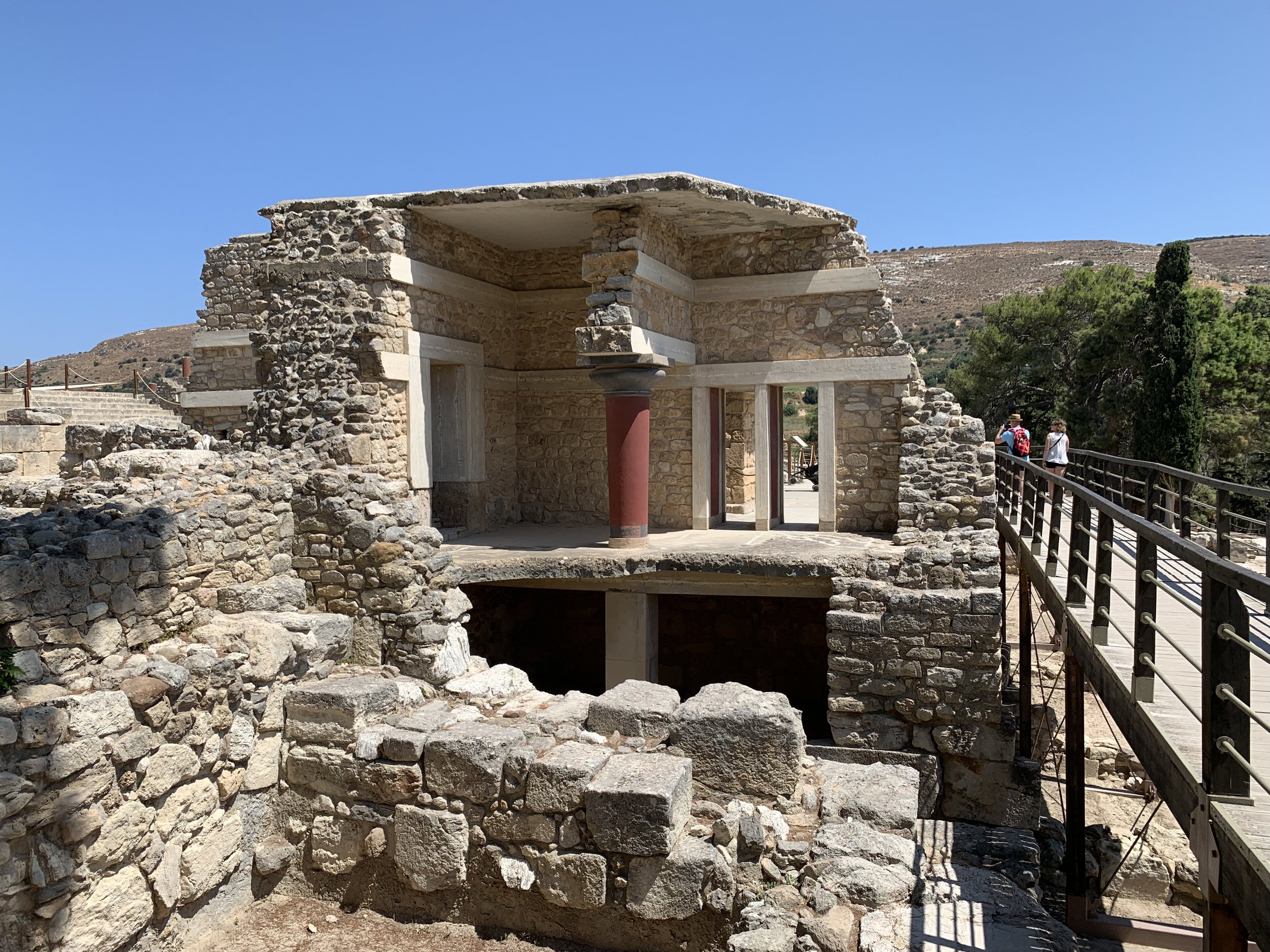Knossos
Restored North Entrance with charging bull fresco
Knossos is an ancient archaeological site located on the island of Crete, Greece. It is believed to have been a major center of the Minoan civilization, one of the oldest civilizations in Europe. The ruins of Knossos cover an area of over 20,000 square meters and include a complex of palace buildings, shrines, and residential quarters.
One of the most notable features of Knossos is the Palace of Knossos, which is believed to have been the center of Minoan administration and culture. The palace was originally built around 1900 BC but was destroyed by an earthquake and subsequently rebuilt on a grander scale around 1700 BC. The palace complex includes a number of courtyards, chambers, and corridors, as well as several impressive staircases and frescoes.
In addition to the Palace of Knossos, there are a number of other notable features at the site, including a large amphitheater, a sacred cave, and the remains of several smaller palaces and buildings. Visitors can explore the site and learn about the history and culture of the Minoans through guided tours and interactive exhibits.
Knossos is a must-visit destination for anyone interested in ancient history and archaeology. Its impressive ruins and rich cultural heritage make it one of the most fascinating and important archaeological sites in Greece.
Legends
According to Greek mythology, the Palace of Knossos was the home of King Minos and his family. King Minos was believed to be the son of Zeus and Europa, and he was known for his wisdom and justice. The palace was said to be a magnificent structure, with colorful frescoes, intricate mosaics, and beautiful gardens.
One of the most famous legends associated with Knossos is the story of the Minotaur. According to the legend, King Minos ordered the construction of a labyrinth beneath the palace to contain a fearsome creature known as the Minotaur. The Minotaur was said to be a monstrous creature with the body of a man and the head of a bull. Every year, King Minos demanded that Athens send seven young men and seven young women as tribute to be sacrificed to the Minotaur.
One year, Theseus, the son of the Athenian king, volunteered to be one of the tributes. When he arrived in Crete, he met and fell in love with King Minos' daughter, Ariadne. She gave him a ball of thread, which he used to find his way out of the labyrinth after killing the Minotaur. Theseus and Ariadne then fled from Crete together, but he later abandoned her on the island of Naxos.
The legend of the Minotaur and the labyrinth has captured the imaginations of people for centuries and has become an important part of Greek mythology. Today, visitors to Knossos can explore the ruins of the palace and imagine the stories and legends that were once associated with this remarkable site.









